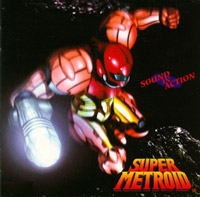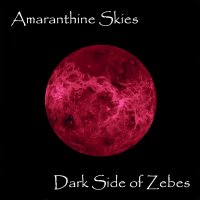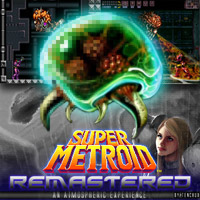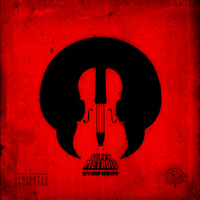The MDb reviews Super Metroid.
MDb Review: Super Metroid : by TJ
Although the second Metroid game had been released in 1991, fans were already asking for the third before the year was up. The reason for this was because the Super Famicom had been released in Japan by the end of 1990, and all of those great series like Zelda and Castlevania had gotten (or were scheduled to get) their 16-bit facelifts. Samus' fans couldn't wait to see what Nintendo could pull off in the world of Metroid with their fabulous 16-bit machine. And we waited.
It wasn't until the spring of 1994 that we found out, when Super Metroid was unleashed on the Super NES. At 24-Meg, it was the largest cartridge ever released at the time. With 16-bit power driving that 24-Meg cart, it was expected that the world of Metroid would be blown open like never before, and our friends at R&D1 did not disappoint.
Taking place almost immediately after Metroid II, the third chapter begins with Samus telling us how she took the Metroid hatchling which followed her out of SR388 at the end of the second mission to a scientific research facility located at Ceres Space Colony. The scientists found that the Metroids, originally thought to be a threat to life everywhere, could actually be used to benefit the galaxy with its energy-producing capabilities. Once Samus was assured that things were safe, she left the colony, only to recieve a distress signal on her way out -- Ceres was under attack from none other than her old nemesis, Ridley and the Space Pirates. Thus begins her return to Zebes and take on Mother Brain's forces once more.
Super Metroid implemented as many ideas into the Metroid framework as possible, making it the most diverse of the Metroid titles yet. Samus had most of her weapons from the first two games (with the exception of the Spider Ball), as well as new weapons, gadgets, and abilities. This made Samus more versatile than she had ever been before, now that she could swing from the ceiling on her Grappling Beam, run at incredible speeds with the Speed Boosters, and detect hidden passages with her X-Ray Scope. She gained the ability to aim her weapon in eight directions, roll into a ball while in midair, propel herself off walls and scale sheer cliffs, and so much more. The smooth gameplay from the first game had returned, and surprisingly (what with all the new moves she could pull off), Samus was still simple to control. This was of course vital, since she was now exploring areas of Zebes previously unseen and battling enemies hitherto unknown. Helping her along that end was a new auto-mapping system, built into the first subscreen to appear in the Metroid series.
My only complaint is that there weren't nearly enough Metroids! The first game had those things rushing after you two or three at a time, hiding around corners, and coming out of the walls! The Metroids in Super were bigger, yes, but not as crafty or menacing. Otherwise, although I found some of the graphics to look a little bit rushed, and the challenge level just a smidgen too easy, Super Metroid proved to be everything that Metroid junkies had hoped for since they first blew away the Mother Brain in the original game. Great new music reprised that atmosphere that first drew me into the Planet Zebes, very cool puzzles blocked Samus' way at every turn, and the Mother Brain had new surprises in store for us at the end of the game. If you're not nostalgic about the original Metroid, chances are you'll find Super Metroid to be your favorite of the games thus far.

SUPER METROID: SOUND IN ACTION
 Label: Sony Records
Label: Sony RecordsItem #: SRCL-2920
Price: ¥2,800
Dates In Production: 06.22.94 - 06.21.96
Track Listing:
ARRANGE VERSION1 Theme of Super Metroid
2 Crateria - The Space Pirates Appear
3 Theme of Samus Aran: Galactic Warrior
4 Super Metroid Ending
5 Metroid Ending
"METROID" ORIGINAL GAME BGM
6 Title
7 Appearance Fanfare~Brinstar
8 Norfair Area
9 Ridley's Chamber
10 Kraid'sChamber
11 Tourian
12 Zebetite
13 Escape
14 Ending
"SUPER METROID" ORIGINAL GAME BGM
15 Opening (Destruction of the Space Colony)
16 Theme of Super Metroid
17 Planet Zebes - Arrival on Crateria
18 Crateria - The Space Pirates Appear
19 Brinstar Overgrown With Vegetation Area
20 Brinstar Red Soil Swampy Area
21 Norfair Hot Lava Area
22 Theme of Samus Aran: Galactic Warrior
23 Wrecked Ship
24 Maridia Rocky Underwater Area
25 Maridia Drifting Sand Underwater Area
26 Norfair Ancient Ruins Area
27 Mini Boss Confrontation BGM (Spore Spawn, Botwoon)
28 Big Boss Confrontation BGM (Ridley, Draygon)
29 Big Boss Confrontation BGM (Kraid, Crocomire, Phantoon)
30 Samus Aran's Appearance Fanfare
31 Item Acquisition Fanfare
32 Samus Aran's Final Cry
33 Mysterious Statue Chamber
34 Tourian
35 Mother Brain
36 Escape
37 Planet Zebes Explodes
38 Ending
MDb Review: Super Metroid - Sound In Action Soundtrack CD : by TJ
Before the review proper, I'd like to take a moment to clear up a few things about the Super Metroid - Sound In Action soundtrack CD. First, it's a Japanese item, and was not available in a North American or European version (in fact, some Nintendo of America employees are not even aware of the CD's existence, so I've been told). Secondly, SIA has been out of print since 1996. And when Japanese CDs go out of print, they become extremely difficult to obtain. Unfortunately, I can't recommend any place to order or purchase an original copy of SIA, unless you have access to CD shops in Japan -- and even then it'll probably require a search. (Previously, I had recommended The Place as a source for SIA, since that's where I found my copy around 1996 or '97; however, not only does The Place no longer have any copies of the CD, but they have since proven to be the absolute WORST mail-order service I have ever had the severe displeasure of dealing with. Mercifully, they have, as of this writing, announced that they are closing down.) And finally, I cannot fulfill requests to make copies of my SIA CD for anyone -- I've been asked countless times and if I complied, I'd be spending far too much time burning CDs and sending them to people. Sorry!
Now then, on to the review:
This CD contains 38 tracks (see list to the right): Five arranged tracks ("arranged" meaning performed on instruments rather than taken from the game itself), nine BGM (background music) tracks from the Famicom version of Metroid, and the remainder are BGM tracks directly from the Super Metroid game.
The arranged tracks are very well done, although they are performed on keyboards with an orchestral arrangement rather than with an actual orchestra. Still, the four Super Metroid themes and the original Metroid ending theme never sounded so full and energetic.
Regarding the Metroid BGM tracks, although the sound quality is fine (with a little reverb added), there are a few issues that need addressing. The decisions made with regard to track length seem a bit careless, with a number of tracks ending abruptly rather than fading out. Also, some gameplay sound effects (jumps, shots, etc.) sneaked their way into track 12, and they're a little harsh and distracting. Finally, track 13 -- the escape sequence theme -- illustrates a notable difference between the Japanese and American versions of Metroid: the Japanese version had a harsh "alarm" sound effect which not only obscured the music, but is just no fun to listen to on CD. The US version of the game does have this alarm sound as well, but it was changed to a much softer sound -- so similar to the tones in the music that it actually sounds like it's part of the escape theme. (I always thought it was part of the music until I heard the Japanese version and realized that it was actually the alarm!)
As for the Super Metroid BGM, they sound just like what you're used to hearing from playing the game itself. Track 16 -- "Theme of Super Metroid," which is heard in the game as Samus is recounting her adventures leading up to Super Metroid -- even omits the "typing text" sound so you can listen to the music in all its pure glory.
Of course the BGM music is great stuff, but the first five arranged tracks are really what make this disc stand out. The total exclusion of Metroid II music is something of a disappointment, but what is on the Sound In Action CD is definitely a testament to the aural brilliance that accompanied us on our first and third adventures with Samus Aran.

MDb Review : The Dark Side of Zebes : By CapCom
THE DARK SIDE OF ZEBES
 Artist: Amaranthine Skies
Artist: Amaranthine SkiesLabel: Concatenation Records
Item #: CCN002
Price: $8/$12 US
Release Date: December 18th, 2007
Track Listing:
1 The Galaxy Is in Captivity (21:35)2 The Last Metroid Is at Peace (20:15)
The Dark Side of Zebes, composed by Jason Vincion (aka Amaranthine Skies), is an incredibly ambient album consisting of two 20+ minute tracks chronicling Samus's exploration of the darkest reaches of Zebes. Jason has been doing videogame music (VGM) covers for the past three years through Dwelling of Duels under such names as Amaranthine Skies, Concrete Mutant, Forfallen, and Kodiak Attack. His first VGM remix was of Wood Man's Theme from Mega Man 2, in 2001. Jason states this album was based off the concept of taking the ambience of the original Super Metroid and seeing how lush it he could make it: "The album came from a desire to build a song off the sparse Space Colony ambient piece."
And let me just say that this album is incredibly ambient, the long tracks wearing you down in the crushing, ominous undertones of Super Metroid's atmosphere. In fact, the music is quite reminiscent of Metroid Prime's soundtrack, only more minimal and much darker, particularly the Crateria Raining mix starting at about four minutes into The Galaxy Is in Captivity. Where The Dark Side of Zebes is minimal it isn't what I call 'environmental ambience', that is, instrumental sounds lacking in melody and rhythm but fitting the sound and feel of a location to evoke a certain mood, an essence, an atmosphere. Instead, the album takes the underlying rhythm, the core of the original songs and expands on it greatly to latch onto the dark energies flowing through the Space Pirate stronghold. Don't be misled by the sample track - that's honestly about as melodic as it gets. If you're not into this sort of stuff, then you'll probably be disappointed with the album - this isn't orchestral and it's not electronica, it's a thick, oppressive aura of ambience that seeps into the core of your body and engulfs you into that universe.
The musical narrative takes you on a journey through the darker reaches of Zebes, from the raid on the Space Colony and initial landing on Zebes, through the swampy area of Brinstar, to the Gold Statue Chamber, and into battle with the Spore Spawn. The second act is a complex, freeform weave of themes and textures from Brinstar, Maridia, and Norfair. However, it never comes to a firm narrative conclusion, producing a constant feeling of tension that is never resolved. In fact, there is little action and melody to punctuate the mood throughout the album, only periods of foreboding darkness relieved by sections of more dynamic melody. It's recommended you use some good surround speakers or headphones to get the full range of the album.
Though The Dark Side of Zebes doesn't use any of the synth sounds from Super Metroid, Jason tried to replicate them through an arsenal of Reason patches. The similarities are most astonishing with the darker synth lines, particularly those of the Gold Statue Chamber, but the lighter, more melodic synths sound significantly different from those you may be used to hearing on Overclocked Remix and the like. For instance, the 'xylophone' synth that plays in the Brinstar and Item Room mixes sounds particularly distracting. Still, the darker synths hold a lot of weight and actually sound quite good.
The album's presentation is very sparse, featuring only a single sheet of paper with no info about the composer or the album - I had to contact Jason directly to get more information about it. The cover art though is excellent, depicting the dark purple haze of Zebes in eclipse. However, I would have liked a more original image for the back than the Horsehead Nebula.
The Dark Side of Zebes is an interesting addition to one's audio collection, though one you probably won't listen to a lot unless you're a big ambience fan. As such, I'm not sure how much I can stretch its purchase from a Metroid fan simply 'for completion's sake' but if you enjoy ambience, this one's probably for you. Still, at $10 it's a pretty good deal for a Metroid album. Let's hope it gets digitally distributed after the initial print run of 100 copies runs out.

SUPER METROID REMASTERED
 Artist: TenchuX
Artist: TenchuXLabel: 8BiTX.com
Item #: N/A
Price: Free
Release Date: 11.24.2010 - 12.14.2010
Track Listing:
SUPER METROID REMASTERED00 Introduction
01 Opening (Destruction of the Space Colony)
02 Theme of Super Metroid
03 Big Boss Confrontation (Ridley - Draygon) + Escape
04 Planet Zebes (Arrival on Crateria)
05 Crateria (The Space Pirates Appear)
06 Brinstar (Overgrown With Vegetation Area)
07 Boss Confrontation (Spore Spawn - Botwoon)
08 Item Room + Fanfare
09 Brinstar (Red Soil Swampy Area)
10 Pre-Boss
11 Big Boss Confrontation BGM (Kraid - Crocomire - Phantoon)
12 Norfair (Hot Lava Area)
13 Theme of Samus Aran (Galactic Warrior)
14 Wrecked Ship
15 Maridia (Rocky Underwater Area)
16 Maridia (Drifting Sands Underwater Area)
17 Norfair Ancient Ruins Area
18 Mysterious Statue Chamber
19 Tourian
20 Mother Brain Confrontation
21 Ending
MDb Review: Super Metroid Remastered : by CapCom
When TenchuX sent me an e-mail saying he was working on an arrange album of Super Metroid for Child's Play, I first applauded, then felt reserved. While I am excited to see Samus once again helping children, I always approach a new Metroid album a little trepidation. This is because Super Metroid is a legendary game. Every single one of its 24 megabits was packed with high-quality art, music, and solid design that remains a benchmark to both the series and 2D gaming as a whole.
That said, the first thing you'll notice is Super Metroid Remastered is MIDI. Not flamboyantly so, but enough that the low-quality synths really stand out. If you're used to hearing modern remixes, this is about ten years behind in terms of synths – we're talking turn-of-the-century OCR. It's a distraction, but that's really what you get from FruityLoops and inspiration from VGMusic.com, VGM's MIDI headquarters. That said, some instruments that really stand out, such as the choir, rock guitar, and shakuhachi.
However, TenchuX manages to evoke the world of Super Metroid by incorporating sound effects, particularly in “Big Boss Confrontation( Ridley – Draygon) + Escape” and the Maridia pieces. He also smoothly bridges the tracks together, the most dramatic of which is the dreadful drop from the open Craterian surface of “Theme of Samus” to the haunted interiors of the “Wrecked Ship”. We don't simply view each part of the world as an aural landscape, we are behind Samus' visor as she delves into the depths of Zebes.
There are some truly outstanding pieces, including old favorites such as “Brinstar (Overgrown with Vegetation Area)”. However, the album stands out through a novel rendition of “Norfair (Hot Lava Area)” with its eerie choir and progressive guitar march that evokes Holst's The Planets. “Crateria (The Space Pirates Appear)” also makes a dramatic return with tense brass and clanking metal over a trance bass, but the best piece is “Maridia (Rocky Underwater Area)”, with a haunting shakuhachi flute, tremulous brass, and haunting choir, ending in ghostly sighs. This isn't just Maridia; it's Maridia full of ghosts.
Despite these standouts, the majority simply lack vitality. Mostly the album is loyal, yet lacks the fire of the originals; it simply feels like we're going through the motions, and here the synths become painful. Some of Super Metroid's strongest pieces simply sound dead, particularly “Norfair (Ancient Ruins Area)”. This is a terrible disappointment considering the ideas behind the album and what a great arrange Super Metroid can make.
In the end though, TenchuX isn't making this for himself: he has made it for both fans of game music, and more importantly, for Child's Play. Here is where traditional reviews simply don't apply because the idea behind Super Metroid Remastered, like all charitable donations, comes from the heart. And Child's Play is certainly worth your dollars.
Though the charity campaign ends December 22, TenchuX will continue taking donations for Child's Play's next drive in 2011.

SUPER METROID SYMPHONY
 Artist: Synthetic Orchestra (Blake Robinson)
Artist: Synthetic Orchestra (Blake Robinson)Label: Joypad Records
Item #: N/A
Price: $10
Release Date: 03.19.2013
Track Listing:
SUPER METROID SYMPHONY01 Science Academy Research Station
02 The Super Metroid Prologue
03 Deserted Ceres Space Colony
04 Ridley/Draygon Encounter
05 To Planet Zebes
06 Arrival on Crateria
07 Beneath Crateria
08 The Space Pirates Emerge
09 Overgrown with Vegetation
10 Spore Spawn/Botwoon Encounter
11 Inside the Item Room
12 The Red Soil Swamp of Brinstar
13 Hostile Incoming
14 Kraid/Crocomire/Phantoon
15 Burning in the Fires of Zebes
16 Samus Aran, Space Warrior
17 The Quiet, Wrecked Ship
18 Power on the Lost Vessel
19 Maridia's Rocky Underground Water
20 Quicksand Underneath Maridia
21 Norfair's Ancient Ruins
22 Chozo Statue Awakens
23 Continue
24 The Mysterious Statue Chamber
25 Tourian - Rebuilt Headquarters
26 Mother Brain - The Final Battle
27 Immediate Evacuation
28 The End of Planet Zebes
29 Credits
30 Finale
MDb Review: Super Metroid Symphony : by CapCom
Released on the 19th anniversary of Super Metroid's Japanese debut, Blake Robinson's Super Metroid Symphony is a masterful orchestral rendition of the series's landmark soundtrack. Robinson, under the name Synthetic Orchestra, has previously rendered several games as high-quality computer-generated orchestral arrangements before tackling this fan favorite, and the results stand up to the original.
If some oldschool Metroid fans were a bit disappointed with the electronica style found in the Prime series, Super Metroid Symphony will definitely satisfy - this is basically Super Metroid in concert. The samples used for this soundtrack are extremely high quality - about the closest you can get outside of the real deal (and Robinson frequently emphasizes their hand-made quality). There are even several remastered sound effects, such as rain, along with Samus's starship and her death scream. Even Dan Owsen's famous monologue has been redone, this time by a grizzled old man (perhaps Chairman Keaton?).
The arrangements are often breathtaking, from the heroic overtones of "The Super Metroid Prologue" to the primal Stravynsky-esque discord of "The Space Pirates Emerge" (think the violence of Rite of Spring). Robinson's rendition of "Green Brinstar" is superb, with a fittingly exotic selection of piano, xylophone, and bells that reek of jungle growth; if any track feels right out of an HD remake of Super Metroid, this would be it. Likewise, "Maridia's Rocky Underground Water" sounds just like the original, with a haunting flute, ocean currents of brass and strings, and a choir hiding somewhere in the murky depths.
Another longstanding fan favorite is "Norfair's Ancient Ruins", arranged here with a resplendent Spanish Bolero-esque style, rather than the Carmina Burana overtones of the original - you'll feel like a Chozo warrior striding down the temple halls during Zebes's glory days. Mother Brain's theme is also predictably intense, with an apocalyptic pipe organ and hair-raising choir - this is horror at its finest! And finally, the ending theme has also given a much-needed boost - I always felt the last few seconds of the original were a bit forced, but Robinson extends them to a fitting conclusion.
That said, Super Metroid Symphony has a few flaws. While the arrangements are good, some of the tracks could have been developed a little further. While Robinson states that he wanted to avoid looping ("I felt that every second of the album people experienced should be hand written by myself and unique") several pieces, such as "The Super Metroid Prologue" and "Theme of Samus Aran, Space Warrior", felt much too short. I kept wanting to hear more, to hear the themes developed, their melodies unleahsed, rather than acting as short transitions. (The runtime of the entire album is 62 minutes, leaving 15 minutes to perhaps expand and develop some of the tracks further.)
On the flipside, certain pieces, such as "Deserted Ceres Space Colony" and "Hostile Incoming" felt a bit repetitive, while "Arrival on Crateria" and "The Wrecked Ship" are repeated outright. Robinson wanted to show both renditions of each track, but it feels as if perhaps these might have worked better if they were arranged together in a single piece rather than as separate, adjacent tracks. One of the more disappointing arrangements for me was the "Ridley/Draygon Encounter", which has a mysterious piano interlude that feels out of place. I just can't picture a Ridley fight like that, and this melody is used again in the escape sequence.
That said, Super Metroid Symphony is currently the finest rendition of the soundtrack you'll find. While it has a few weak spots, this is exactly the kind of album fans have been imagining since we first heard Game Music Concert 4 way back in the 90s. Available for $10 from either iTunes or Loudr (the latter as DRM-free MP3 or FLAC) Super Metroid Symphony is well worth the purchase, another gold album for your Metroid music collection.
Note: The Metroid Database would like to thank Blake Robinson for his kindness in providing us with a review copy of his album.










